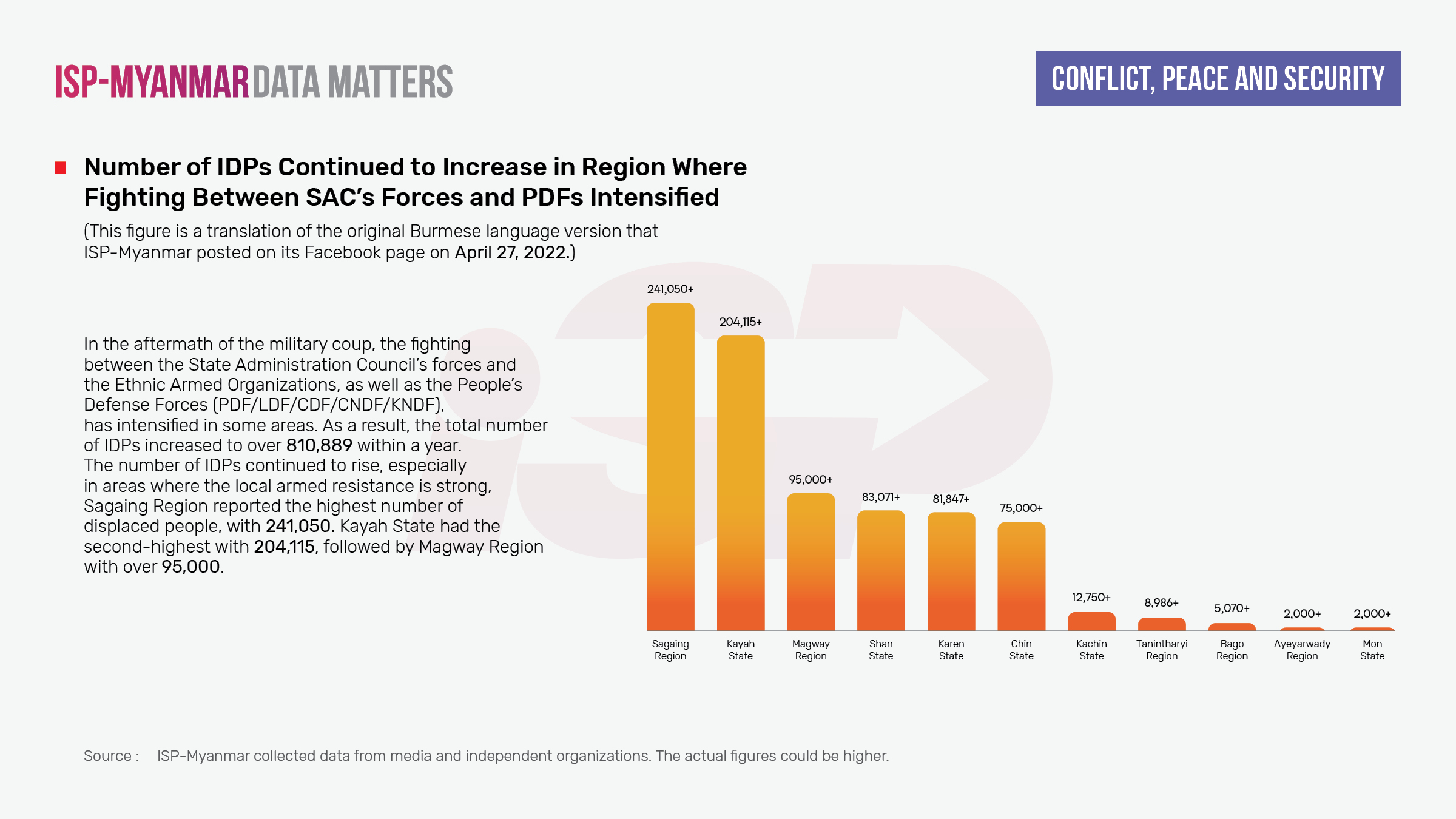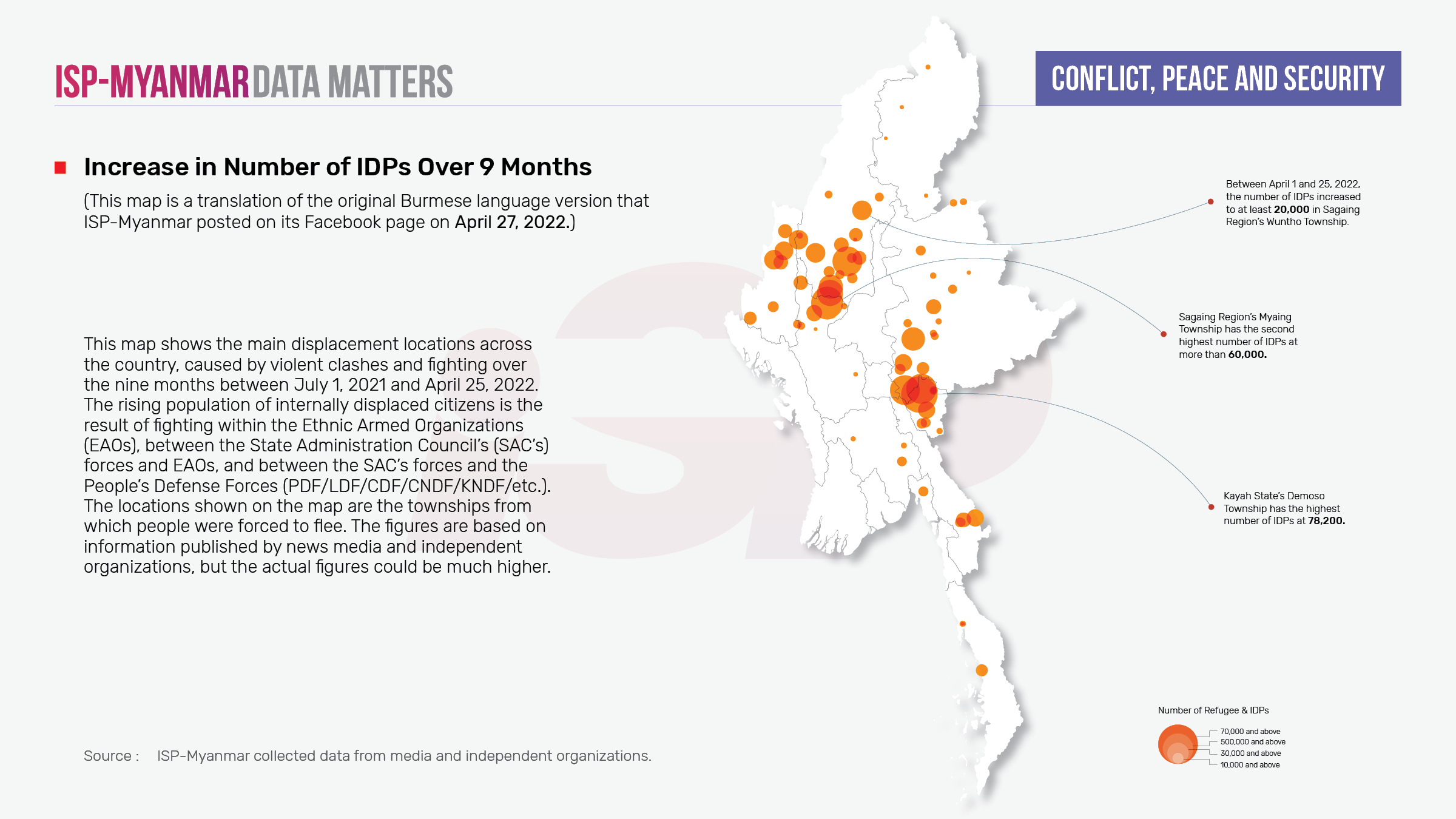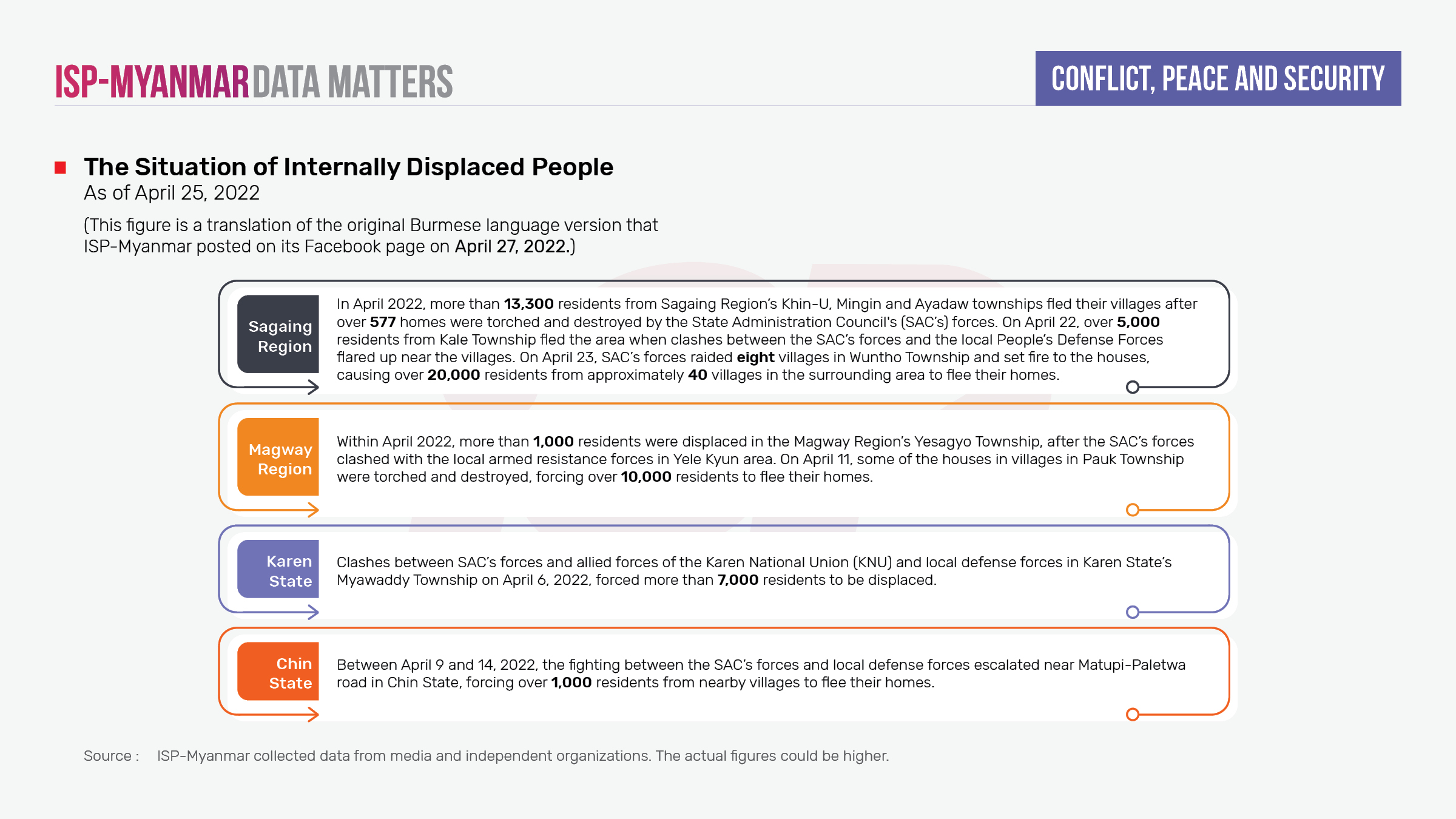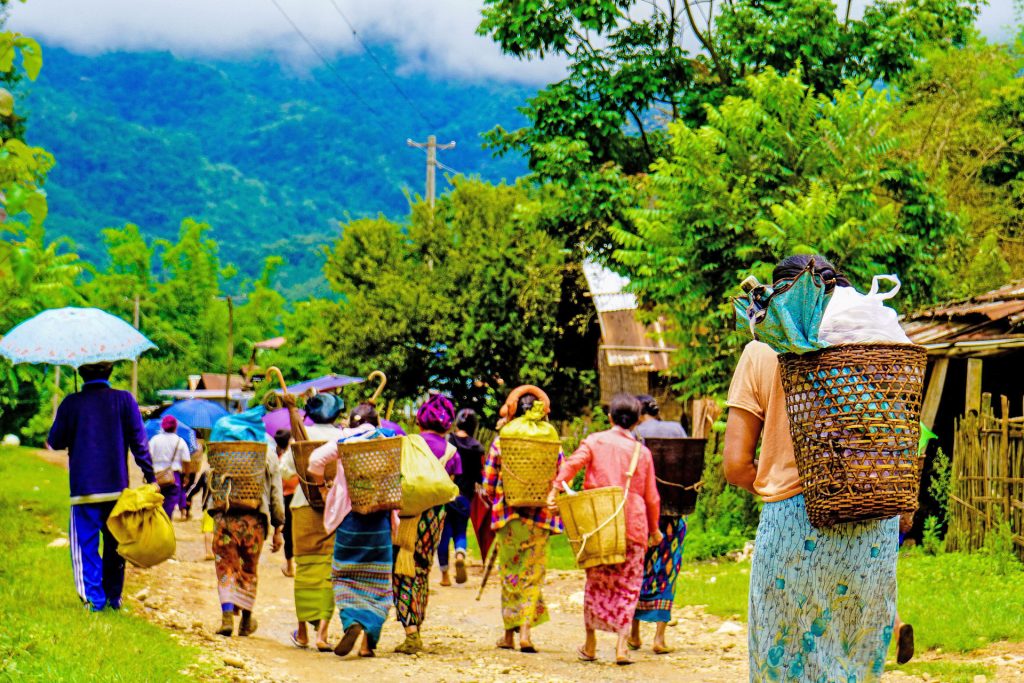Data Matters No. 16
(This article is a translation of the original Burmese language version that ISP-Myanmar posted on its Facebook page on April 27, 2022.)




Since the military staged a coup d’état on February 1, 2021, various forms of mass protest against injustice have occurred across Myanmar. Protests are still ongoing in a variety of different forms, including armed conflicts between the ethnic armed organizations (EAOs) and SAC’s forces in ethnic regions where those EAOs are based. Simultaneously, fighting between the People’s Defense Forces (PDF/LDF/CDF/CNDF/KNDF) and SAC’s forces has also erupted in some areas. This has created a growing need for humanitarian assistance as conflicts and clashes have intensified and the number of internally displaced persons has risen.
Since the military coup on February 1, 2021, through to April 25, 2022, battles and skirmishes across the country have resulted in a total of 810,889 Internally Displaced Persons (IDPs). There were already over 497,200 IDPs prior to the coup; the total number of people displaced from their homes in Myanmar has now grown to more than 1,308,089. Additionally, there are over 1,002,000 refugees living in camps at Myanmar’s borders with Bangladesh, India and Thailand.
After the coup, the number of IDPs increased most rapidly in regions where fighting between SAC’s forces and Ethnic Armed Organizations (EAOs), and local People Defense Forces had intensified. The Sagaing Region has the highest number of IDPs – over 241,050 – followed by Kayah State which has recorded 204,115 IDPs. Within April, 2022 alone (as of April 25), the number of IDPs increased by at least 58,300.
In April 2022, more than 13,300 residents from Sagaing Region’s Khin-U, Mingin and Ayadaw townships fled their villages after their homes were torched and destroyed by the SAC’s forces. Violent clashes between the SAC’s forces and the local People’s Defense Forces in Sagaing Region’s Kale and Wuntho townships also escalated, with some of the residents’ homes set on fire, forcing more than 25,000 people to flee the area. The number of refugees has also continued to rise in Magway Region and Chin State, where fighting between the SAC’s forces and the local armed resistance forces has intensified. In April alone, more than 11,000 residents were displaced in Magway Region’s Yesagyo and Pauk townships, and over 1,000 residents were forced to flee their homes after heavy fighting erupted near Matupi-Paletwa road in Chin State.
∎ Why does it matter?
By looking at the number of civilian fatalities and injuries, how they were killed and wounded, and the number of people displaced by fighting involving SAC’s forces and EAOs, or within EAOs themselves, it is possible to examine whether or not armed forces have committed human rights violations from the perspective of transitional justice. In addition, by studying the post-coup situation, further research can be conducted to examine whether there has been a change in conditions related to Myanmar’s peace process.
∎ Other relevant readings
On-the-ground reports from ethnic news organizations and other independent media groups provide regular updates about conflict situations, their impact, and the collateral damage in the aftermath of the military coup. These include reports of renewed fighting in ethnic areas, civilian fatalities, and rising refugee and IDP issues on the ground. In addition, records and reports by United Nations organizations such as the United Nations Office for the Coordination of Humanitarian Affairs (UNOCHA), and other independent local and foreign organizations also provide information about the ongoing conflict situation in Myanmar.

